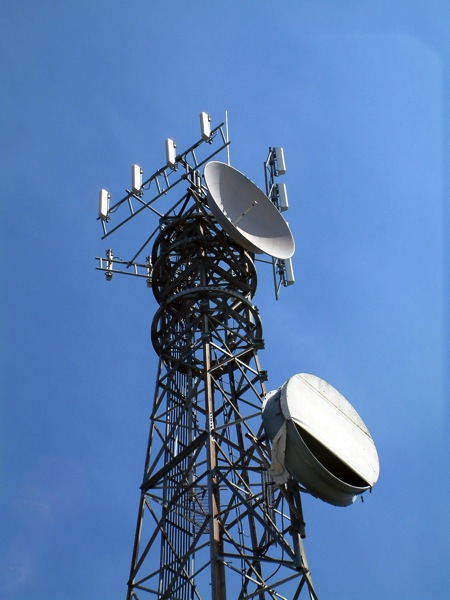I gave a radio interview to Outside the Loop Radio discussing some of the topics that I recently discussed on this blog. For those interested, you can hear the interview here.
It’s More Than Just The Testicles
June 24th, 2013 § 4 comments § permalink
An article in press in Fertility and Sterility is getting a lot of media attention. The study connected men seeking infertility care to a cancer registry in the State where the clinic was located. The researchers found that men with infertility had almost twice the chance of getting cancer and almost three times the chance if the man had no sperm in his ejaculate.
The authors of the study have a few theories about why cancer and male infertility may be connected. Cells need to divide just right to make sperm in the testes, and problems with division could lead to both problems with making sperm and the kind of bad division that makes cancer. It could also be that toxic substances in the environment may lead to both infertility and cancer.
Whatever the reason, we’re beginning to understand that problems with male fertility are just a tip of a much bigger iceberg that involves health in general. It’s more than just about the testicles.
Time Magazine Interview
May 31st, 2013 § 8 comments § permalink
I was quoted in Time Magazine in an article on “Frontiers of Fertility“. For those interested, it’s a nice read.
Are Cell Phones Bad for Sperm?
May 12th, 2013 § Comments Off on Are Cell Phones Bad for Sperm? § permalink

Are cell phones bad for sperm? They emit electromagnetic radiation, and some have questioned whether that may be harmful for sperm.
Researchers exposed sperm in a test tube to the typical 850 and 900 MHz frequencies of cell phone transmitters and found that its movement worsened, its inner cell life decayed, and bad reactive oxygen molecules that are thought to damage sperm increased.
But a man doesn’t commonly hold his sperm up against his cell phone’s transmitter, and there’s a lot of distance and stuff between his cell phone and his sperm. So what’s the information about cell phones and sperm in real life?
In a study of sailors in the Norwegian navy, men who were exposed to high power military equipment transmitting radiofrequency electromagnetic radiation had problems with infertility. The higher the exposure, the worse the infertility, which argues that the electromagnetic radiation was the factor damaging a man’s reproductive chances. (An interesting observation in the study was that higher exposure resulted in less boys and more girls at birth.) But the high power electromagnetic radiation in that study is still not quite real life use of a cell phone for a typical man.
In another study of men going to a fertility clinic, researchers divided them into four groups based on how much time they spent talking on a cell phone each day: none; less than two hours per day; two to four hours per day; and greater than four hours per day. As talk time went up, sperm count, motility, inner sperm cell life, and the number of normally shaped sperm went down.
Should men stay away from using cell phones to protect their sperm? The pieces of the puzzle aren’t enough to make a blanket recommendation like that yet. But in the meantime, it’s probably a good idea not to go wild on the cell phone if a man is trying to impregnate his partner.
What’s a Normal Testosterone?
April 8th, 2013 § 6 comments § permalink
Wiki (not sure if that’s his real name) wrote in a comment, “is low Testosterone unusual for young athletic men (under 25) , what will be your minimum level (red line) for Testosterone of men under 25, as i found the minimum level varies according to each lab … mostly skewed based on the middle aged men they usually test.”
Great question! A while ago, many used “age-indexed” testosterone, meaning that lower levels were considered normal in older men. Most in the field have abandoned that approach as it’s like saying, we know that diabetes is more common as people age, so we’ll just use higher blood sugars as normal when they get older. That would be an approach ignorant of the basis of the disease. To make matters worse, to create the age-indexed thresholds of normal testosterone, each lab essentially was required to do that themselves. So you had a lot of labs with different numbers, and that made interpreting those lab results really difficult.
Your question gets to another point, though, which is what is a normal testosterone for an individual man? Testosterone doesn’t work by itself; a whole machine inside the cell uses it. It’s like gas in a car: you can have the same gas, but a Ferrari will drive differently than a Volvo. (No offense to Volvo owners intended.) So one man’s testosterone of 350 ng/dL may be perfectly fine, but for another, that may be low.
That’s why guys need to do evaluation and treatment with their doctors. (If you are trying to figure out a good doctor who knows about hormones in men, check out that part of the FAQ.) A doctor can evaluate the whole man and see other signs of low testosterone, and tailor treatment with different medications (many of which are described elsewhere in this blog.)
Thanks, Wiki, for the great question!
